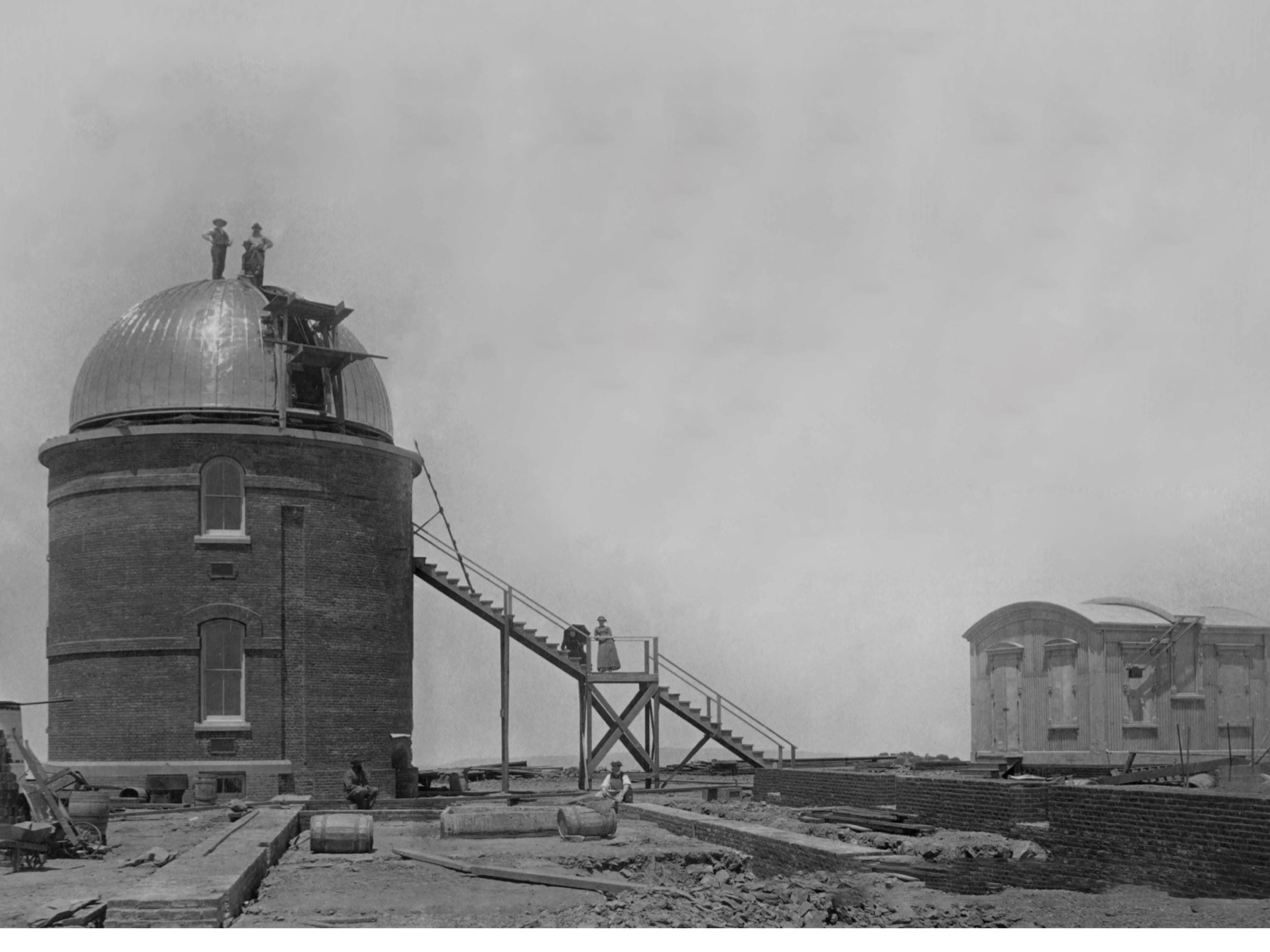
In 1881, several years before Lick Observatory officially opened, a fine 12-inch refracting telescope was installed in the newly constructed North Dome. With it, astronomers eagerly observed rare transits of Mercury and Venus across the face of the Sun.
In 1891 Albert Michelson used a new technique called interferometry to measure the size of Jupiter’s moons with the 12-inch, an accomplishment cited in his 1907 Nobel Prize. In the 1920s and 30s, the 12-inch hosted pioneering developments in the emerging field of electronic light detection.
In the late 1970s, with a bequest from Anna L. Nickel, Lick built the 1-meter (40-inch) Nickel reflecting telescope in its Santa Cruz labs. In 1979, the 1-meter replaced the 12-inch in the North Dome.
The Nickel has “weighed” black holes in the centers of the galaxies, searched for extraterrestrial intelligence and much more. Today it is remotely-operable, so most users conduct their observations from specially equipped rooms on UC campuses.
The 1-meter Nickel Reflector delivers more than ten times the light-gathering power of its predecessor, the 12-inch Refractor.
The following video describes a portion of the history of the North Dome, Nickel 1-m Telescope, and the scientific instruments that can be installed for doing different types of research.

